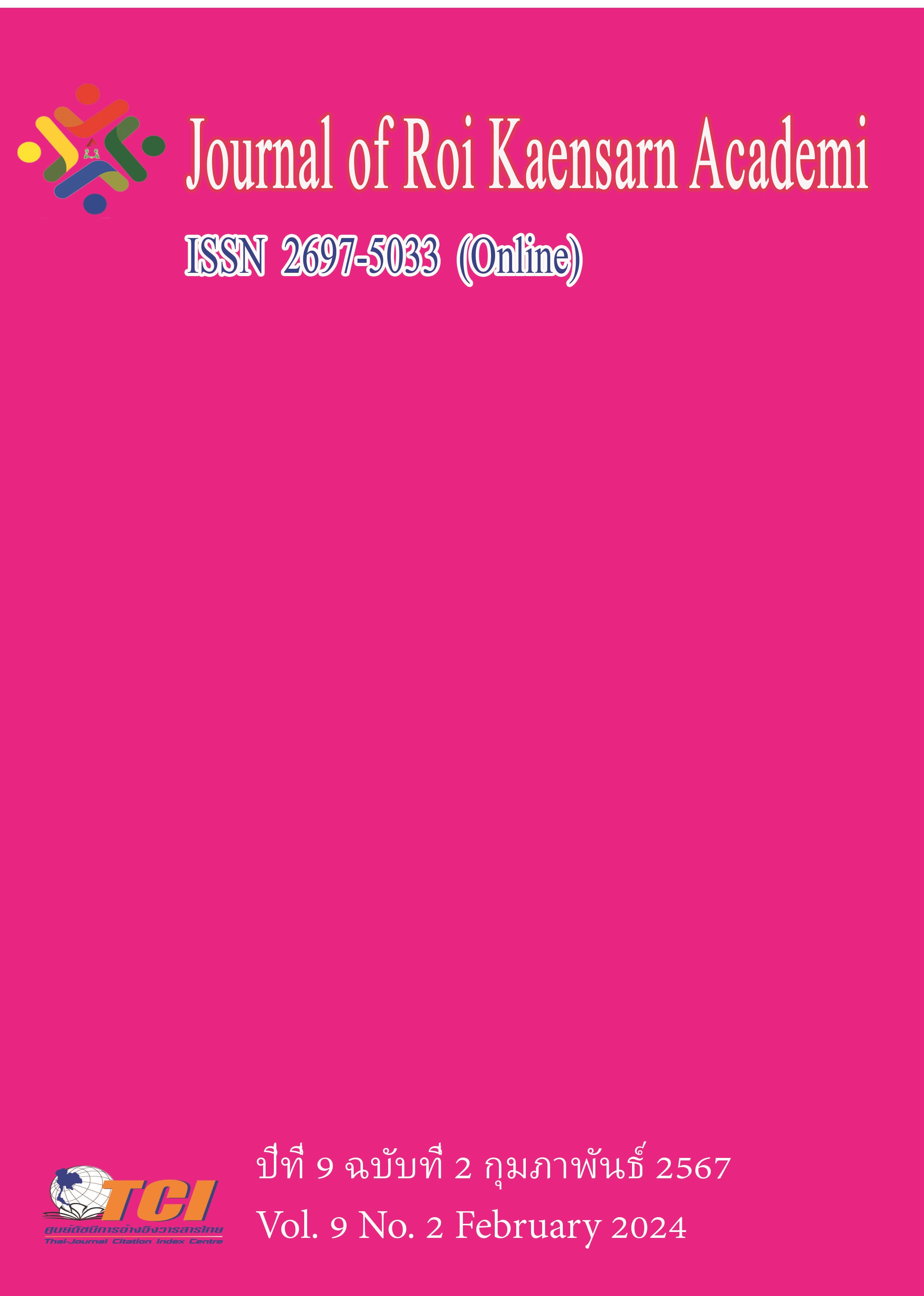Studying Chinese Ancient Poetry Artistic Songs in Tang Dynasty for Teaching 2nd-Year Students at Shenyang Conservatory of Music in China
Main Article Content
บทคัดย่อ
The objectives of this study were (1) To study Chinese ancient poetry artistic songs in Tang Dynasty and Caruso Bel Canto singing theory; (2) To compile a guidebook of Chinese ancient poetry artistic songs in Tang Dynasty with Caruso Bel Canto singing theory; (3) To teach 2nd-year students major in vocal performance at Shenyang Conservatory of Music in China in the experimental group according to the guidebook and teaching plan; (4) To evaluate the teaching effects after teaching 2nd-year students major in vocal performance at Shenyang Conservatory of Music in China. This research was mixed-method research. The population for the experimental research was 90 2nd-year students major in Bel Canto vocal performance, at Shenyang Conservatory of Music, China. The sample was consisted with 12 students, selected by random including 6 males (3 bass and 3 tenor) and 6 females (3 alto, 3 soprano), conducted in the experimental group in the 2nd semester of 2023.
The findings were: Teach 2nd-year students major in vocal performance at Shenyang Conservatory of Music in China in the experimental group according to the guidebook and teaching plan. The whole teaching process lasted for 16 weeks, with 90 minutes in weekly session. The vocal performance course targeted at 2nd-year students majoring in vocal performance at Shenyang Conservatory of Music has shown positive teaching effects. Participants exhibited notable improvement in their overall performance, with significant progress seen in theoretical knowledge, singing skills, and quality of voice. While some areas such as pronunciation and music performance may require additional attention, the overall results indicate that the course has been effective in enhancing participants' understanding and performance in vocal performance.
Article Details
เอกสารอ้างอิง
Cai, Z. (1999). The Musicality of Tang Poetry. Harvard Journal of Asiatic Studies, 59(1),
-118.
Chen, X., & Yang, M. (2019). An exploration of vocal health and hygiene education for Chinese university students. International Journal of Environmental Research and Public Health, 16(17), 3170.
Feng, J. (2017). The impact of cultural capital on the career success of classical singers in China. Asian Music, 48(2), 3-20.
Gao, H., & Wang, L. (2010). The Teaching of Chinese Music at the Tertiary Level: A
Case Study. Journal of Research in Music Education, 58(1), 5-22.
Picken, L. (1975). Chinese Music and Musical Instruments. London: Oxford University Press.
Qi, X. (2007). The Art of Chinese Singing. Beijing: China Nationality Press.
Siu, R., & Law, W. (2013). A Study of Teaching Methods in Traditional Chinese Music Education. International Journal of Music Education, 31(2), 190-203.
Wang, S. (1999). The Art of Singing Chinese Poetry: A Study of Song and Yuan Ci. Hong Kong: Chinese University Press.
Wang, Y. (2015). An investigation into assessment practices in Chinese vocal performance education. British Journal of Music Education, 32(2), 147-163.
Xie, J., & Wang, Y. (2019). Vocal performance education in China: An investigation into perceptions of students and teachers. Frontiers in Psychology, 10, 2008.
Yuan, P. (2014). The development of vocal music education in China. Journal of Singing, 71(3), 297-303.
Zhang, Y. (2016). Vocal performance education in China: A review and analysis. International Journal of Music Education, 34(1), 19-29.
Yuan, P. (2014). The development of vocal music education in China. Journal of Singing, 71(3), 297-303.
Zhang, Y. (2016). Vocal performance education in China: A review and analysis. International Journal of Music Education, 34(1), 19-29.

